This week sees the launch of an updated bat synopsis from Conservation Evidence, adding new studies that have come out since the first synopsis was published in 2013.
The synopsis collects and summarises studies that test conservation actions such as ‘provide bat boxes for roosting bats’, and organises the studies by the action that they test. This focus on solutions makes it a handy point of reference for conservationists wishing to see what might work — and what is unlikely to work — to conserve bats.
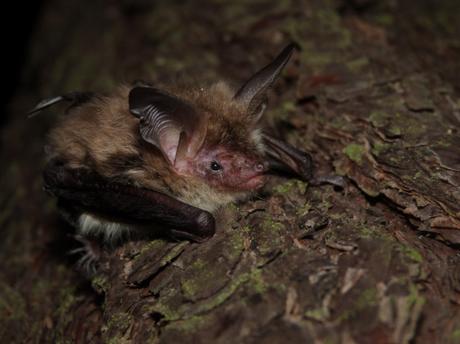
Bechstein’s bat – photo credit Claire Wordley
" aria-describedby="caption-attachment-180492" data-orig-size="1379,1034" sizes="(max-width: 510px) 100vw, 510px" data-image-title="Bechstein’s bat-Wordley" data-orig-file="https://coreybradshaw.files.wordpress.com/2019/03/bechsteins-bat-wordley.jpg?w=510" data-image-meta="{"aperture":"0","credit":"","camera":"","caption":"","created_timestamp":"0","copyright":"","focal_length":"0","iso":"0","shutter_speed":"0","title":"","orientation":"0"}" data-medium-file="https://coreybradshaw.files.wordpress.com/2019/03/bechsteins-bat-wordley.jpg?w=510?w=300" data-permalink="https://conservationbytes.com/bechsteins-bat-wordley/" alt="Bechstein’s bat – photo credit Claire Wordley" srcset="https://coreybradshaw.files.wordpress.com/2019/03/bechsteins-bat-wordley.jpg?w=510 510w, https://coreybradshaw.files.wordpress.com/2019/03/bechsteins-bat-wordley.jpg?w=1020 1020w, https://coreybradshaw.files.wordpress.com/2019/03/bechsteins-bat-wordley.jpg?w=150 150w, https://coreybradshaw.files.wordpress.com/2019/03/bechsteins-bat-wordley.jpg?w=300 300w, https://coreybradshaw.files.wordpress.com/2019/03/bechsteins-bat-wordley.jpg?w=768 768w" class="alignnone size-full wp-image-180492" data-large-file="https://coreybradshaw.files.wordpress.com/2019/03/bechsteins-bat-wordley.jpg?w=510?w=510" />Bechstein’s bat (Myotis bechsteinii) — photo credit Claire Wordley
Free to read or download from Conservation Evidence, the update represents a major addition to the original, containing 173 studies to the original 101. Studies are included if they tested an action that could be put in place for conservation, and measured an outcome for bats. As well as adding studies published from 2013 on, the update adds studies originally published in Spanish or Portuguese, and it is hoped that more languages will be added in future editions.
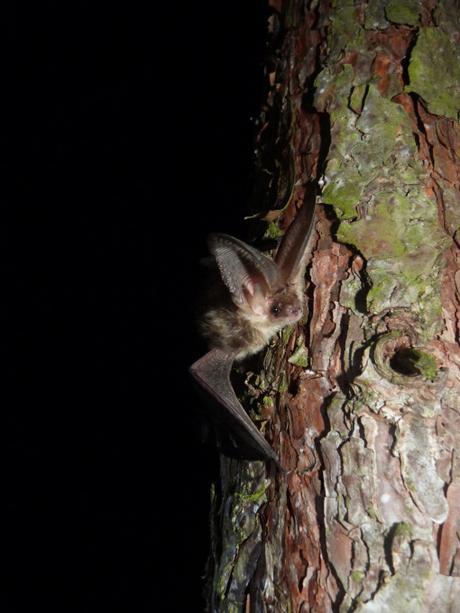
Brown long-eared bat – photo credit Claire Wordley
" aria-describedby="caption-attachment-180494" data-orig-size="1378,1837" sizes="(max-width: 510px) 100vw, 510px" data-image-title="brown long-eared bat-Wordley" data-orig-file="https://coreybradshaw.files.wordpress.com/2019/03/brown-long-eared-bat-wordley.jpg?w=510" data-image-meta="{"aperture":"0","credit":"","camera":"","caption":"","created_timestamp":"0","copyright":"","focal_length":"0","iso":"0","shutter_speed":"0","title":"","orientation":"0"}" data-medium-file="https://coreybradshaw.files.wordpress.com/2019/03/brown-long-eared-bat-wordley.jpg?w=510?w=225" data-permalink="https://conservationbytes.com/brown-long-eared-bat-wordley/" alt="Brown long-eared bat – photo credit Claire Wordley" srcset="https://coreybradshaw.files.wordpress.com/2019/03/brown-long-eared-bat-wordley.jpg?w=510 510w, https://coreybradshaw.files.wordpress.com/2019/03/brown-long-eared-bat-wordley.jpg?w=1020 1020w, https://coreybradshaw.files.wordpress.com/2019/03/brown-long-eared-bat-wordley.jpg?w=113 113w, https://coreybradshaw.files.wordpress.com/2019/03/brown-long-eared-bat-wordley.jpg?w=225 225w, https://coreybradshaw.files.wordpress.com/2019/03/brown-long-eared-bat-wordley.jpg?w=768 768w" class="alignnone size-full wp-image-180494" data-large-file="https://coreybradshaw.files.wordpress.com/2019/03/brown-long-eared-bat-wordley.jpg?w=510?w=510" />Brown long-eared bat (Plecotus auritus) — photo credit Claire Wordley
Good intentions, bad outcomes
One of the striking elements of the bat synopsis is that as more actions are studied, it transpires that many commonly promoted solutions do not work, only partly work, or do not work in their current form. This underlines the need for conservation solutions to be evidence-based; good intentions and lots of effort do not necessarily lead to good outcomes for bats, or for any other aspect of nature.
A striking example from the first synopsis was the study testing ‘wire and ball’ bat gantries, designed to ‘guide’ bats to cross the road at safe heights. This study found that the bats ignored these structures, crossing the road at their original, dangerous, crossing point. Some conservationists suggested that this was due to the type of gantry studied, and that other gantries would be more effective. The updated bat synopsis includes a further study on bat gantries of a ‘wire mesh’ design — and found them to be just as ineffective as the ‘wire and ball’. Since other structures designed to reduce bat mortality on roads have shown some promise, such as green bridges and underpasses, it is a travesty that bat gantries continue to be offered as a solution in the UK.
Another hope has been that legal protection of bats during development would ensure that bats that roost in buildings could be retained, even if their original roost was destroyed. While legal protection of bats in the UK doubtless prevents much direct killing of bats, disturbance during the maternity period, and other ills, it does not appear to ensure the retention of bat roost spaces.
A review from the UK found that 68% of licenced activities led to the destruction of bat roosts, while another study found that less than one percent of replacement roosts were used in comparable numbers to the roost that was destroyed. Furthermore, in the UK 67% of licensees did not submit the mandatory post-development report, while 81% of licensees did not monitor to see if their ‘mitigation’ had worked.
A lack of emphasis on implementing measures that actually work, and a lack of enforcement for returning paperwork, are clearly hampering the effectiveness of legal protection. While legal protection offers some benefits, and, if enforced, a framework to drive further actions, by itself it is clearly not enough to conserve bats.
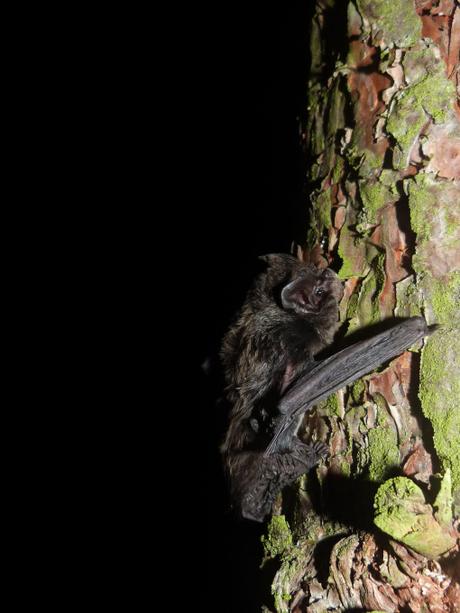
Barbastelle bat: photo credit Claire Wordley
" aria-describedby="caption-attachment-180493" data-orig-size="1380,1839" sizes="(max-width: 510px) 100vw, 510px" data-image-title="barbastelle bat-Wordley" data-orig-file="https://coreybradshaw.files.wordpress.com/2019/03/barbastelle-bat-wordley.jpg?w=510" data-image-meta="{"aperture":"0","credit":"","camera":"","caption":"","created_timestamp":"0","copyright":"","focal_length":"0","iso":"0","shutter_speed":"0","title":"","orientation":"0"}" data-medium-file="https://coreybradshaw.files.wordpress.com/2019/03/barbastelle-bat-wordley.jpg?w=510?w=225" data-permalink="https://conservationbytes.com/barbastelle-bat-wordley/" alt="Barbastelle bat: photo credit Claire Wordley" srcset="https://coreybradshaw.files.wordpress.com/2019/03/barbastelle-bat-wordley.jpg?w=510 510w, https://coreybradshaw.files.wordpress.com/2019/03/barbastelle-bat-wordley.jpg?w=1020 1020w, https://coreybradshaw.files.wordpress.com/2019/03/barbastelle-bat-wordley.jpg?w=113 113w, https://coreybradshaw.files.wordpress.com/2019/03/barbastelle-bat-wordley.jpg?w=225 225w, https://coreybradshaw.files.wordpress.com/2019/03/barbastelle-bat-wordley.jpg?w=768 768w" class="alignnone size-full wp-image-180493" data-large-file="https://coreybradshaw.files.wordpress.com/2019/03/barbastelle-bat-wordley.jpg?w=510?w=510" />Barbastelle bat (Barbastella barbastellus) — photo credit Claire Wordley
Mixed messages
While there are several actions for bats that look to be beneficial, there are many more that are still ambiguous and where more research is needed. For example, there has been relatively little research into actions that could mitigate the effects of farming on bats, compared to the number of such studies on birds. Most of the existing research focuses on agroforestry, mostly in the Neotropics, and on agri-environment schemes and organic farming, mostly in Europe.
Agroforestry — planting or retaining native shade trees among crops — appears at first glance to have mixed results; however, a closer look shows that effects vary with landscape composition and vegetation complexity, but that agroforestry does retain high bat diversity.
However, agri-environment schemes in the UK appear to have been far less successful. Two studies found that the activity of six bat species did not differ between farms managed under agri-environment schemes and those managed conventionally. The other study found lower bat activity on agri-environment scheme farms.
The current agri-environment schemes in the UK unfortunately do not appear to have much effect on bats, a stance that is supported when we look at the impacts of agri-environment-scheme measures such as managing hedges or retaining un-mown field margins. Perhaps landscape scale factors are important here too, or perhaps we need a suite of new agri-environmental measures that have demonstrable impacts on these species. Either way, so far the schemes cannot be considered effective bat conservation measures.
Organic farming is another action presumed to benefit bats, but which has shown mixed results when studied. While a few studies found higher bat activity or diversity, or greater activity of a few species on organic farms, many found no difference in bat activity or diversity between organic and conventional farms.
However, two studies found that farms using few or no chemicals (but presumably not certified organic), had higher bat activity and diversity than conventional farms. Multiple, high-quality studies in a range of farming systems are needed to understand these discrepancies. It is clear that making assumptions about what works for bats is insufficient to conserve them, and that we need to challenge our assumptions by rigorously testing conservation measures before proclaiming them to be beneficial.
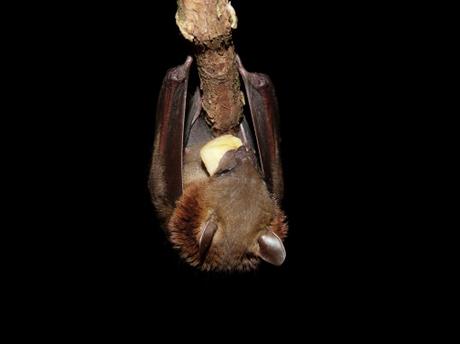
Short-nosed fruit bat – photo credit Claire Wordley
" aria-describedby="caption-attachment-180491" data-orig-size="1379,1034" sizes="(max-width: 510px) 100vw, 510px" data-image-title="short-nosed fruit bat-Wordley" data-orig-file="https://coreybradshaw.files.wordpress.com/2019/03/short-nosed-fruit-bat-wordley.jpg?w=510" data-image-meta="{"aperture":"0","credit":"","camera":"","caption":"","created_timestamp":"0","copyright":"","focal_length":"0","iso":"0","shutter_speed":"0","title":"","orientation":"0"}" data-medium-file="https://coreybradshaw.files.wordpress.com/2019/03/short-nosed-fruit-bat-wordley.jpg?w=510?w=300" data-permalink="https://conservationbytes.com/short-nosed-fruit-bat-wordley/" alt="Short-nosed fruit bat – photo credit Claire Wordley" srcset="https://coreybradshaw.files.wordpress.com/2019/03/short-nosed-fruit-bat-wordley.jpg?w=510 510w, https://coreybradshaw.files.wordpress.com/2019/03/short-nosed-fruit-bat-wordley.jpg?w=1020 1020w, https://coreybradshaw.files.wordpress.com/2019/03/short-nosed-fruit-bat-wordley.jpg?w=150 150w, https://coreybradshaw.files.wordpress.com/2019/03/short-nosed-fruit-bat-wordley.jpg?w=300 300w, https://coreybradshaw.files.wordpress.com/2019/03/short-nosed-fruit-bat-wordley.jpg?w=768 768w" class="alignnone size-full wp-image-180491" data-large-file="https://coreybradshaw.files.wordpress.com/2019/03/short-nosed-fruit-bat-wordley.jpg?w=510?w=510" />Short-nosed fruit bat (Cynopterus brachyotis) — photo credit Claire Wordley
Researchers: we need you
One of the shocking truths highlighted by the original synopsis was how little we know about how to conserve bats; just 30 of the 78 actions reviewed had ever been tested. While the update found many new studies, there are still many untested actions, and bat conservation in the tropics remains a woefully understudied area.
If you work in bat conservation, do consider how vital it is to test the actions undertaken to save bats, and think about whether you can test a conservation solution.
Conservation Evidence aims to update the bat synopsis annually from now on, and hopes that new studies will fill evidence gaps, unravel conflicting evidence, and improve our understanding of ways to conserve bats.
Let’s make sure that the actions we promote for bat conservation actually work.
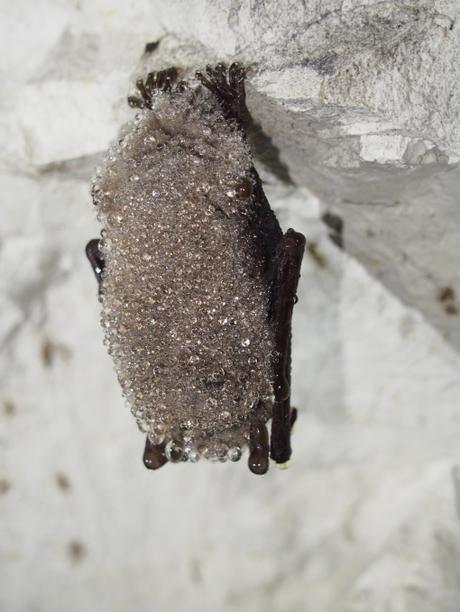
Pond bat – Photo credit John Altringham
" aria-describedby="caption-attachment-180490" data-orig-size="1380,1837" sizes="(max-width: 510px) 100vw, 510px" data-image-title="pond bat-Altringham" data-orig-file="https://coreybradshaw.files.wordpress.com/2019/03/pond-bat-altringham.jpg?w=510" data-image-meta="{"aperture":"0","credit":"","camera":"","caption":"","created_timestamp":"0","copyright":"","focal_length":"0","iso":"0","shutter_speed":"0","title":"","orientation":"0"}" data-medium-file="https://coreybradshaw.files.wordpress.com/2019/03/pond-bat-altringham.jpg?w=510?w=225" data-permalink="https://conservationbytes.com/pond-bat-altringham/" alt="Pond bat – Photo credit John Altringham" srcset="https://coreybradshaw.files.wordpress.com/2019/03/pond-bat-altringham.jpg?w=510 510w, https://coreybradshaw.files.wordpress.com/2019/03/pond-bat-altringham.jpg?w=1020 1020w, https://coreybradshaw.files.wordpress.com/2019/03/pond-bat-altringham.jpg?w=113 113w, https://coreybradshaw.files.wordpress.com/2019/03/pond-bat-altringham.jpg?w=225 225w, https://coreybradshaw.files.wordpress.com/2019/03/pond-bat-altringham.jpg?w=768 768w" class="alignnone size-full wp-image-180490" data-large-file="https://coreybradshaw.files.wordpress.com/2019/03/pond-bat-altringham.jpg?w=510?w=510" />Pond bat (Myotis dasycneme) — Photo credit John Altringham

